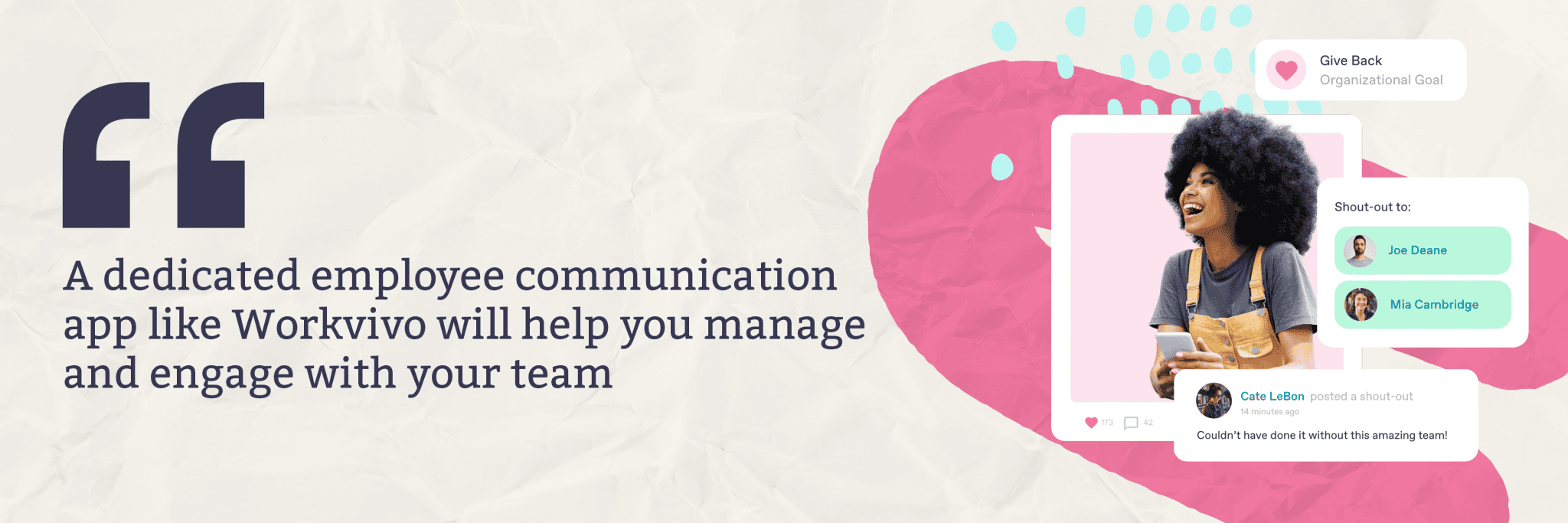Remote Work – The Ultimate Guide (2022)

Richard Barrett
Director of Marketing
11 Apr 2022

Remote work has experienced an unprecedented boom since the pandemic, with more and more employees opting to work from home full time or under flexible, hybrid home/office arrangements.
Working remotely presents companies with many opportunities, but it also introduces challenges that most organisations had never faced before this rapid shift.
Knowing how to manage a team remotely, understanding how to set boundaries, and communicating effectively are all areas that businesses are addressing with enthusiasm and ingenuity.
With the aid of the right tools and the right approach, businesses can benefit from greater loyalty and staff retention, without sacrificing productivity and engagement levels in the process.
26% of employees say they intend to keep working remotely in the months and years ahead, so getting to grips with these new expectations is essential to maintaining a healthy company culture and a happy team.

What is remote work?
Remote work takes place outside of the traditional office space. Instead of commuting to work, employees connect to their workplaces digitally. They choose where they work and (to a lesser extent) how they work.
The remote working model isn’t new. Between 2005-2019, the number of remote workers rose by a staggering 140%.
Modern remote work is usually enabled by a WiFi connection and digital communication and productivity tools. These tools allow team members to work from anywhere and ensure businesses and employees can keep track of projects in a structured way, without in-person office meetings.
Remote work offers lots of enticing possibilities, including:
- Location independence so employees can choose where they live
- Fewer costs around commuting and office space
- The possibility of higher staff retention levels
Remote working has often been associated with greater freedom and putting more power in the hands of employees. Conversely, before the world was forced to work remotely during the pandemic, it was also sometimes viewed with scepticism, considered as an easy option or a way to avoid company oversight.
There’s now been a fundamental change in the way we think about productivity and the workplace, leading to higher adoption of remote working across multiple diverse industries. Businesses are interested in the outputs of their employees, regardless of their physical location – and have come to see that remote work offers new horizons of possibility and earning potential.

Why is remote working on the rise?
Until quite recently, remote work faced something of a stigma. There was a dominant fear amongst leaders that if employees weren’t physically present in an office space, they would be less productive and less engaged with their workplace.
Most remote workers tended to be freelancers, with a tiny proportion of the overall workforce dialling in from locations other than a centralised company building.
During the pandemic, attitudes abruptly shifted. For many companies, this change was brought about by necessity rather than a desire to ‘go remote’. But two years on, lots of businesses are now taking a different view.
With enough data to sift through, we can now see that remote work is every bit as valid as working at the office.
Remote work can help companies in many key ways, including:
Fuelling productivity
The pandemic provided a fantastic breeding ground for studies into the impact of remote work on productivity. Understandably, many companies were concerned that employees would flag behind on targets and that work would suffer as a result.
Instead, the results paint a radically different picture! It seems that remote work can actively improve levels of productivity.
A two-year study of remote employees at Fortune 500 companies reported that most people were either just as productive or more productive than they had been in the office. There were other great benefits, too.
Without a commute to worry about, the research found that individuals surveyed were:
- Willing to go the extra mile to complete their work
- More adaptive and responsive to changes within the organisation
- Working longer hours than they had in the office – and getting more done!
These results are backed up by several similar studies, including one that found productivity rose by 13% during periods of remote work.
Happier employees
Happier team members are more productive and engaged than their dissatisfied counterparts.
They are also more likely to stay in their jobs for longer. With lots of worry around the Great Resignation, keeping your team happy is crucial to success in 2022 and beyond.
Team members now have more options on where they work, and they’re taking advantage of them in large numbers.
One of the key possibilities of remote work is location independence. This means employees can relocate to another area without leaving their chosen industry, often attaining a higher quality of life in the process. They can also avoid long, costly, and complicated commutes.
When surveyed, employees say the ability to effectively manage their schedule is the main perk of remote working. This flexibility gives them more time and money to spend on their life outside of work, while the freedom they’ve been granted encourages higher loyalty to the businesses that enable it – and a newfound passion for their profession.
At all levels and across businesses of all sizes, incorporating remote work – whether permanently or via hybrid arrangements – net positive for teams.

Solving remote work challenges for businesses
Alongside the benefits of remote working, we should also be mindful of the challenges presented by its widespread adoption:
- How do you engage with team members in disparate locations?
- What impact does this have on your brand identity?
- How do you network when you’re working remotely?
- What if some team members prefer to be in the office?
- Why does the team want to work remotely in the first place?
No two employees have the same approach to work, and invariably, some will be better suited to working remotely than others. But remote work is an inherently flexible approach, so there are inventive ways around these problems.
Know your team
Make sure you truly understand your employees. Remote work offers a chance to get to know them as people, by giving them added visibility via an employee app. This also opens up opportunities for keeping engagement on track, regularly communicating, and opening up an ongoing dialogue that makes everyone in the company feel valued and seen.
Shape your remote work culture
Not every business has to be fully remote. Your organisation might be better suited to a flexible hybrid arrangement where employees spend some days in the office, and others at home. This presents opportunities for mingling with co-workers and meeting in person with other companies. Consider what works best for your business, and put a solid plan into action.
Refine your brand identity
Many companies are eager to redefine who and what they are in the aftermath of the pandemic. This is crucial for making the most of remote work opportunities, whether full-time or on a flexible basis. Talk to your team about the road ahead. Decide together how you’ll approach remote work, and how this will be reflected in your overall branding and image.
The future of remote work
It’s too early to tell how long remote work will dominate conversations around office culture and company structure.
Many employees aren’t ready to exchange the new normal for the prior status quo. When we consider the future of remote work and its impact on workplaces everywhere, there are three main options for companies to consider with care:
Back to the office
Some teams miss the feeling of connection and opportunities that only seem possible within a physical office space. Following a lengthy period of enforced remote working, the reassurance of the office is a strong draw – with some people eager to meet and mingle again! But there are drawbacks to this approach.
Many employees say they are more productive at home, and even during the peak of the pandemic, outputs at companies that switched to remote either rose or remained stable.
If you’re considering a more traditional approach, explore alternatives to being in the office full time, and look for tools you can use to communicate with the team when you’re not together.
Thanks to the mainstream adoption of digital communication apps, there’s no need to feel disconnected from your employees.
Hybrid working
Many companies are eager to get their employees back into the office, but asking them to commit to a full week in the office is often an uphill struggle.
Hybrid working arrangements are an ideal solution. They accommodate a more straightforward office structure alongside remote opportunities. A staggering 83% of employees say they think hybrid working is the way forward.
In the hybrid model, your team spends part of the week at home, and part of the week in the office. For many employees, the hybrid way is a ‘middle ground’ they are willing to adopt, allowing them to reap both the benefits of home working and the benefits of the office.
Hybrid work is often seen by leaders and team members alike as the perfect way of achieving true work/life balance.

Full-time remote work
Remote work became the norm during the pandemic, and this trend is something around around 20% of the workforce is predicted to continue full time. While some people felt isolated during their period of remote work, for others, it provided a new form of workplace liberation.
Businesses are responding to this shift. 16% of companies exclusively hire remote workers, and many others are switching to a hybrid model.
For some companies, full-time remote work may not be possible. But incorporating some of its core principles, with hybrid work or piloting of remote working trials, is a great way to refresh your company for the 21st century and effectively safeguard it against any future disruption that comes your way.
How to manage a remote team
Building a remote team means your employees could be either global or local. It’s a great way to source the best talent for your organisation instead of relying on whoever is geographically available.
But it’s important to work out your management style, as remote work is not the same as seeing your team every day in the office.
There are certain challenges to managing teams remotely, but there are also routes to success:
Celebrate big and small wins
It may not be possible to celebrate in person, but you can still let your remote employees know how proud you are of a job well done. When a project goes well, take the time to let the rest of the team know, and celebrate in whatever way you can.
This might be sending a congratulatory email, a notice on your communication app, or a few well-chosen GIFs: whatever approach you take, recognition is a great motivator and will keep your highest-performing employees on track, as well as inspiring others to do well.
Have clear expectations
Establish the expectations you have for your remote team members, and communicate them clearly at the outset of any new contract.
Nobody wants their employment terms to be unclear!
Being open and honest with your employees will ensure they feel more secure in their work and also allows you to identify if standards start to slip. Consider key areas such as:
- Timekeeping
- Working hours
- Response times
- Communication tools
- Deadlines and project milestones
Do your remote employees respond to queries quickly enough? Do they log their time on projects correctly? Are the milestones of projects they work on clearly defined?
All of these aspects are equally important for in-house employees, but they can be harder to keep track of when working remotely. Ensure there’s no room for misinterpretation.
Set boundaries
Remote work can sometimes make it difficult for employees to switch off. Physically leaving the office provides a natural ‘pause’ to the day’s work, but for those working from home, it’s a little more complicated!
Encourage productivity but be sure not to demand too much from your remote team. Make sure they take the time to stop and pursue other activities outside of work, as well as keep on top of their general health and wellbeing.
While having more time is one of the major appeals of remote work, remote workers can slip into bad habits and poor time management. This will lead to burnout, stress, and reduced productivity.
Let your team know if you think they’re taking on too much. Encourage them to take breaks, and offer support when needed.
5 ways to keep employees engaged while working remotely
Engagement is one of the most critical areas for any business. Engaged employees are not only more productive but happier and more loyal to their respective companies. To aid employee retention, keep a strong engagement focus, no matter where your team members are based.
Focusing on engagement will help you to:
- Avoid The Great Resignation – 63% of companies say retaining employees is more difficult than hiring them
- Foster a sense of purpose – 28% of employees say they’ve reassessed their priorities since the pandemic began
- Future-proof your organisation in the post-Covid world of work
Mastering your engagement strategy becomes even more critical when you don’t see your employees in person. But there are ways to keep your remote team engaged with the company and their work, using the right tech and the right approach to build a supportive, energising company culture.
1. Provide the right tools
The secret to remote success is as much about creating the right environment, as it is about the work itself. As the chaos of the pandemic fades away but remote work remains, now is the ideal time to rethink and avoid falling into patterns that impact engagement.
Not everyone has space for a home office, but small steps can make a big difference!
Encourage your remote workers to create a dedicated area where they can work remotely. It might be a small foldaway desk and chair, or a more permanent solution.
If you have the budget, you could also consider investing in a few office essentials for your remote workers. This will help them feel as valued as any other employee, and motivate and inspire them to do their best work.

2. Encourage connections
Remote work can be liberating, but it can also be lonely. Finding new ways to curb this loneliness and boost connections across teams is one of the biggest challenges for businesses.
Using digital tools to keep employees in the loop can also help foster connection on a personal level, ensuring your team gets to know one another as individuals, rather than just as distant co-workers.
Foster connections via:
- Friendly team chats
- Employee catchups
- Team-building exercises
Arrange in-person get-togethers with a remote option – this will help encourage gatherings without excluding any remote employees who can’t take part.
It’s important to continually reinforce your team’s connections, through set rituals and a continuous stream of open dialogue and engagement-focused activities.
3. Ask for feedback
Every business is formed by its employees, so paying close attention to their thoughts and needs is crucial to your organisation’s success. Without regular check-ins and time face-to-face, it’s much harder to know how your team is feeling.
31% of employees say they feel engaged with their workplace, but that their company could also do more to improve their experiences at work. These insights are only discoverable through encouraging honest feedback and open discussion.
Organise catchups with every member of your team, whether they’re remote or in-house. Be sure to ask for feedback, and always listen to their responses.
You never know what fascinating discoveries you might make along the way, and how they can help drive the company forwards. They’ll also help ensure that your workers always feel valued, no matter where they happen to be based.
4. Use technology
Modern tech makes staying connected much simpler. Since the pandemic, many companies have adopted digital communication tools, but are you using them as efficiently as you could?
Spreading yourself too thin with multiple apps could lead to confusion, particularly when your team is working remotely. Which one do they use to make a video call? Which one do they use to record their activities? Where do they post an update?
While there are lots of communication tools and apps on the market, sometimes it helps to streamline for the sake of clarity.
The right app will help you to:
- Communicate updates when necessary
- Give your remote team greater visibility
- Improve the employee experience
A dedicated employee communication app like Workvivo will help you manage and engage with your team without the need for you to all be in the same physical location.
5. Stay flexible
The pandemic has forced companies to be more agile. As it wanes, don’t let this creativity slip away! Instead, keep the same flexible approach and be as accommodating as you can to your employees as they get to grips with the post-Covid world of work.
Adapt company goals to include remote and/or hybrid workers. Don’t be afraid to be innovative in the way you assess employee performance and project milestones.
Fully remote? Recommend dedicated desk space for workers who prefer that structure. Offer them chances to work remotely part-time instead of full-time, if you can do so.
Use your employee engagement app to encourage connection amongst employees who crave the bonding opportunities of the office. This will help them embrace modern remote working styles without leading to alienation or disconnect.

Summary
Remote work offers opportunities to support your employees in achieving the optimal work/life balance, while also keeping your company at the forefront of innovation.
Grappling with remote working styles can be difficult at first, but as we’ve seen over the last couple of years, the possibilities are almost endless!
There are many different ways to use remote work to your advantage, whether through adopting a hybrid-style workplace or converting your company to an organisation that’s 100% remote.
The modern workplace needs to accommodate change, and adding remote work to your company mix is the perfect way to help future-proof your company for whatever lies ahead.
Using tools like the Workvivo app will ensure you’re always connected to your team, no matter whether you’re in the same room or miles apart.

